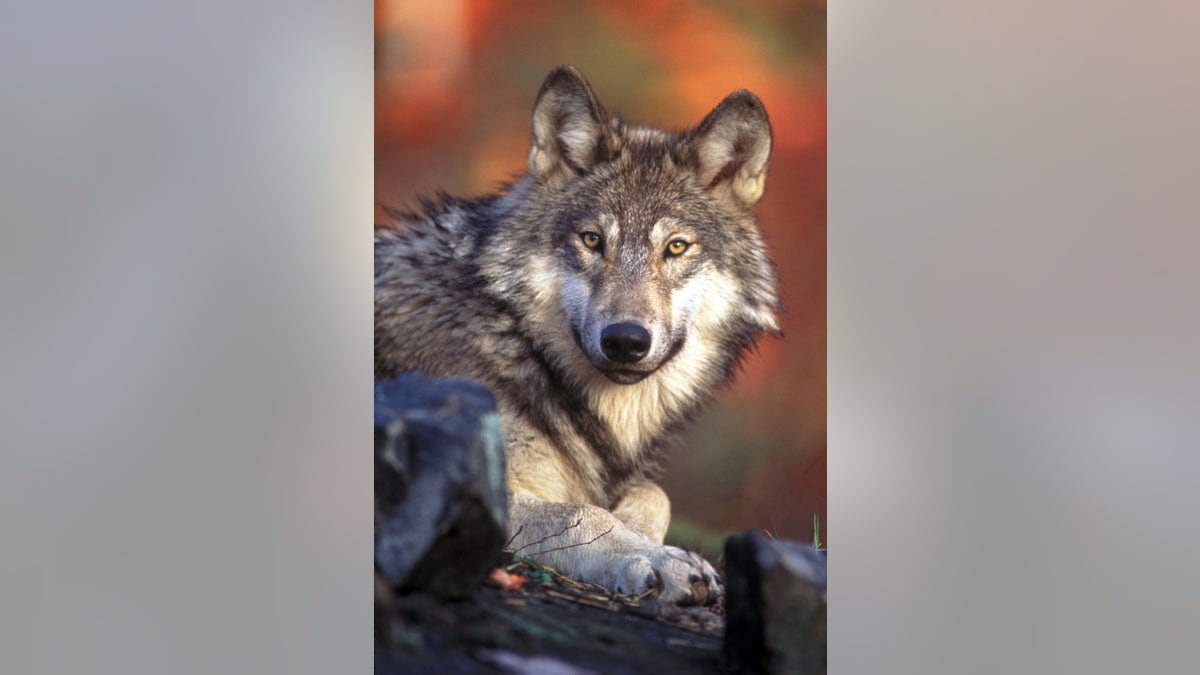
This undated handout photo provided by the U.S. Fish and Wildlife Service shows a gray wolf. Scientists have found that, contrary to what many people think, killing wolves does not always reduce attacks on livestock. (AP Photo/U.S. Fish and Wildlife Service, File)
GRANTS PASS, Ore. – Scientists have found that, contrary to what many people think, killing wolves does not always reduce attacks on livestock.
Researchers at Washington State University found that for every wolf killed in Idaho, Montana and Wyoming over the past 25 years, there was a 5 percent increase in the sheep and cattle killed the next year. Livestock kills only started going down after overall wolf numbers were reduced by more than 25 percent.
The study was published Wednesday in the journal PLOS One.
The reason appears to be that killing the alpha male or female, which normally keep a tight leash on other members of the pack, frees the other wolves to start breeding. That produces more breeding pairs. And breeding pairs trying to feed pups are more likely to kill livestock than individual wolves, said lead author Rob Wielgus, professor of wildlife ecology and director of the university's Large Carnivore Conservation Lab.
"It's like killing the schoolteacher, the animals that keep everyone else in line," he said. "You've got no brakes anymore."
Wielgus said earlier research found that livestock kills by bears and cougars went up when dominant males were killed, opening their territory to out-of-control young predators. But he did not expect similar results with wolves, which hunt as packs and have a rigid social structure.
He said the "Eureka!" moment came when researchers saw that the 5 percent increase in breeding pairs that came with each wolf killed matched the 5 percent increase in livestock kills.
William J. Ripple, distinguished professor of ecology at Oregon State University, said the study appeared to be important, and it could ultimately lead to major changes in wolf management, if it holds up.
"More research is now needed to study the number of livestock killed by large carnivores when we do nothing, compared to the typical approach to killing the offending predators," he wrote in an email.
John Pierce is chief scientist for the Washington Department of Fish and Wildlife, which funded the study. Pierce said it covered a large scale, and the department was looking forward to research Wielgus was doing on what happens to an individual pack, where killing wolves still appears to be effective at reducing livestock attacks, at least in the short term.
"It is a well-constructed analysis and good science," he said. "But it kind of tees up the question of how does social behavior of wolves interplay with prey interactions, and depredation interactions."
Wolves were reintroduced into the Northern Rockies in the mid-1990s, kicking off a political battle that still rages between ranchers who want to kill wolves and conservation groups who want to see their numbers increase and spread. Hunting has been allowed in Idaho, Montana and Wyoming since federal protections were lifted.
State Endangered Species Acts still protect wolves in Washington, Oregon and California, though California has no known wolves right now. Oregon has not killed a wolf for attacking livestock since reaching accord with conservation groups on a plan that requires ranchers to take non-lethal steps to protect herds in order to qualify for state compensation or a potential order to kill wolves attacking livestock. Washington state continues to kill wolves that attack livestock, but does not allow hunting.
After Endangered Species Act protections were lifted, Wyoming, Idaho and Montana allowed the hunting and trapping of wolves. Since then, the overall wolf populations in each state have gone down more than 25 percent, the level at which wolves naturally reproduce without humans intervening, and livestock deaths have gone down, Wielgus said.
Last September, a federal judge stripped Wyoming of authority over wolf management and restored federal protections, saying the state plan failed to guarantee more than a bare minimum of wolves would be maintained.




















